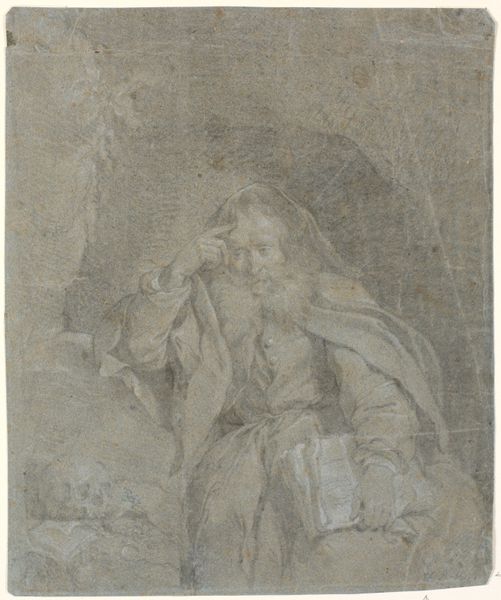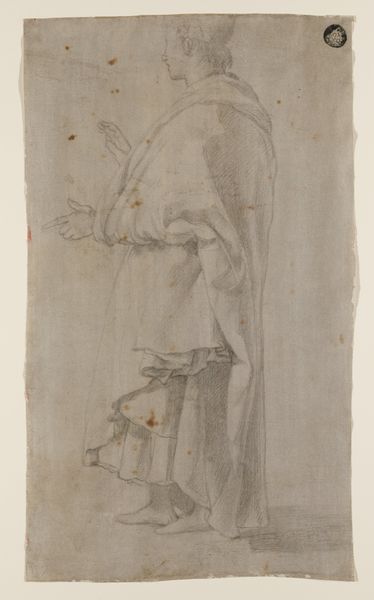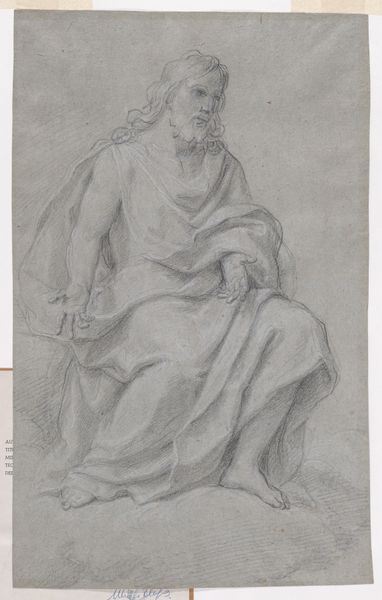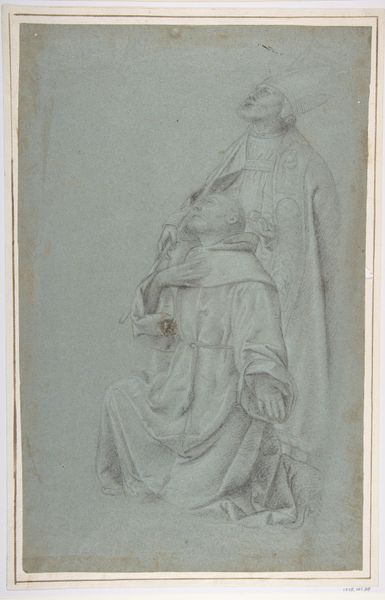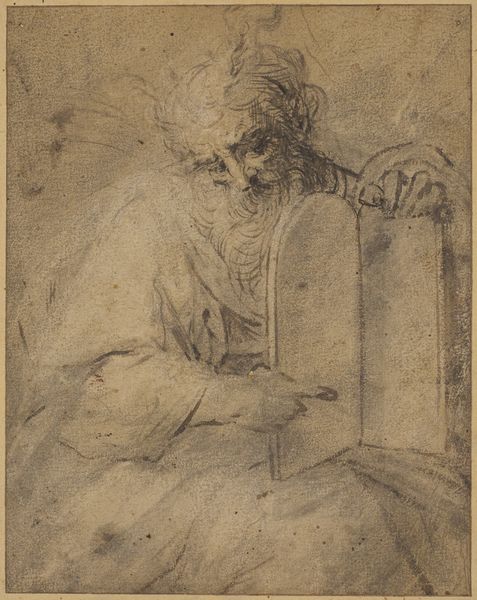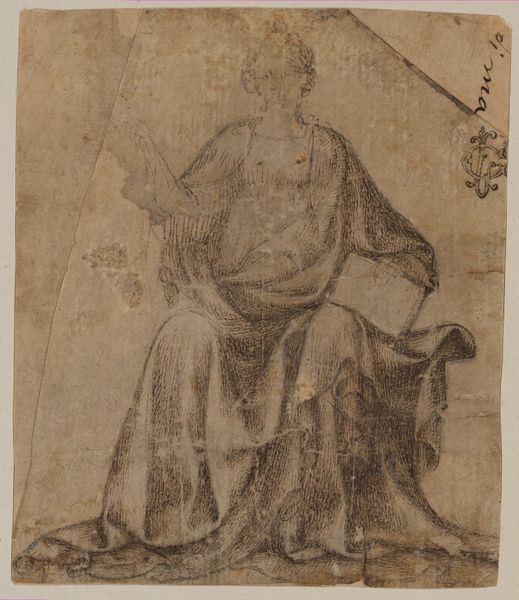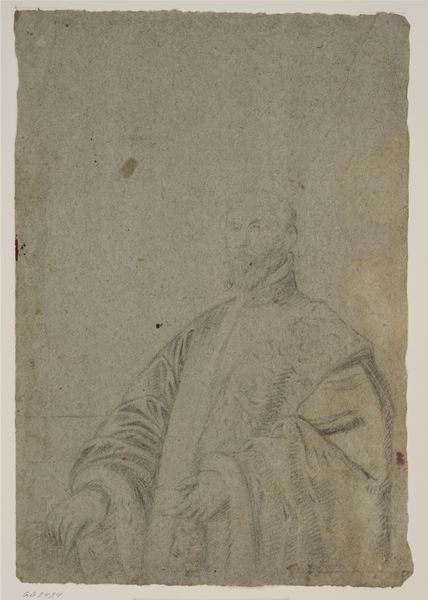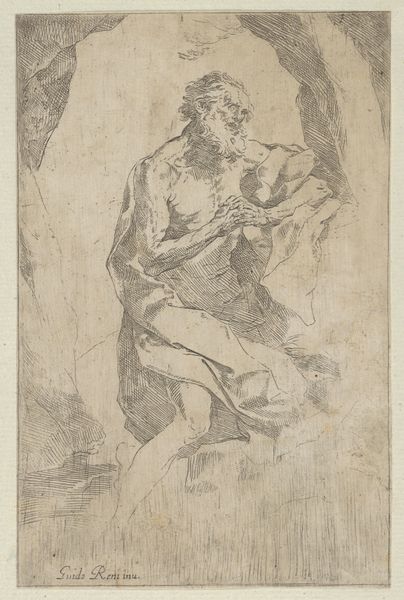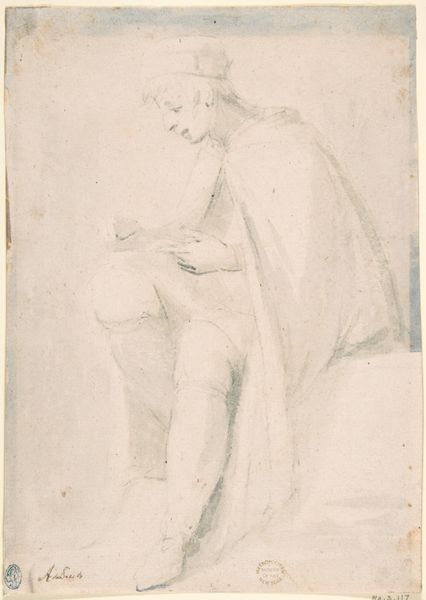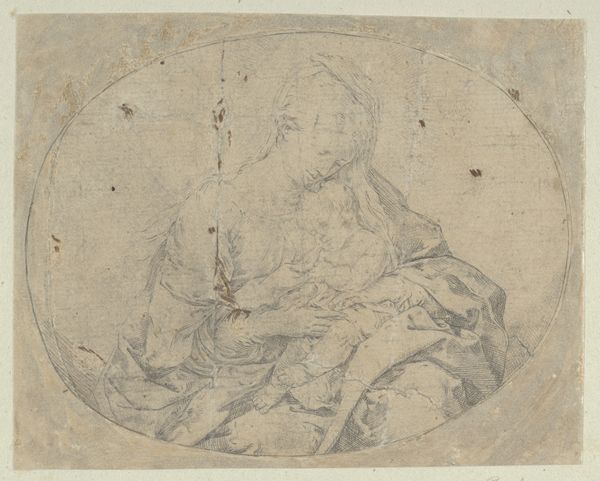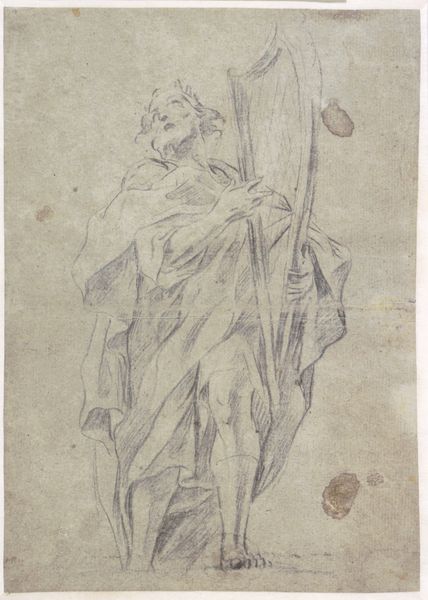
Study for Portrait of a Man in an Arm Chair, from Collection d'imitations de Dessins d'après les Principaux Maîtres Hollandais et Flamands c. 1821
0:00
0:00
drawing, paper, graphite
#
portrait
#
drawing
#
paper
#
graphite
#
history-painting
#
academic-art
#
realism
Dimensions: 428 × 310 mm (sheet); 510 × 394 mm (secondary support)
Copyright: Public Domain
Curator: Good morning. We're standing before "Study for Portrait of a Man in an Arm Chair, from Collection d'imitations de Dessins d'apr\u00e8s les Principaux Ma\u00eetres Hollandais et Flamands," a graphite and paper work created around 1821 by Christian Josi, currently housed here at the Art Institute of Chicago. Editor: Well, initially, the most striking aspect is the almost ethereal quality of the drawing. The graphite work creates a subdued palette, rendering a serene and contemplative mood. Curator: It’s interesting that you perceive serenity, given the historical context. Josi's "Collection d'imitations" series underscores a pivotal shift in artistic appreciation. Before mass reproduction, these meticulous drawings served as crucial archives of Old Master paintings, disseminating knowledge of Dutch and Flemish masters among artists and collectors. The "portrait" isn't necessarily of a person, but a recreation. Editor: Indeed. Examining the chair itself, one detects the level of precision in rendering the ornate carvings. And the composition – note how the archway frames the figure, leading the eye towards the face. What might it mean for Josi to present a drawing "imitating" the Old Masters in a way that appears so strikingly contemporary in its starkness? Curator: That's a central tension. Josi operates in an era steeped in academic art. Yet, through imitation, he navigates this shifting ground, showcasing a remarkable technical skill while simultaneously questioning authenticity. Look at the handling of light and shadow. The chiaroscuro hints at the original works while being unmistakably rendered by Josi's own hand, a translation across time and media. The man’s features appear generic, almost, a representative of a type more than a record of an individual. Editor: I concede. The absence of individualized characteristics, like details that would signal distinct identity, redirects the viewer's focus onto the graphic qualities of Josi's technique. There's an argument to be made that this elevates draftsmanship to a primary subject, independent of the "portrait" itself. Curator: Precisely! The implications resonate, blurring lines between copy and creation, function and art. I wonder if contemporaries appreciated the nuance of what Josi was doing, beyond mere reproduction for preservation and accessibility. Editor: It's given me pause, reflecting on the ways art-historical records impact the present and how the circulation of imagery evolves and influences not just artists, but societies. Curator: An insightful way to bring this study of history home to the present, wouldn’t you say? Thank you for joining me.
Comments
No comments
Be the first to comment and join the conversation on the ultimate creative platform.
